|
Unless genre movies and literature have lied to me, I'm assuming that Britain has less than a thousand spies at any one time. Our most famous secret agent, after all, has the numeric designation 007, and if we had more than a thousand then his number would surely be 0007. And if Fritz Lang's Spione (whose translation is the unfussy Spies) is anything to go by, then pre-WW2 Germany had a similar ceiling on its agents, who also appear to have had three-figure designations. That said, the ones who get a mention in the film are all in the hundreds, so it's just possible their 007 is known simply as 7, which would leave the way open for a spy with the code number 23,964. That wouldn't look quite so cool on movie posters, would it?
Originally released in 1928, Spione sits midway between the mighty Metropolis and the fanciful but still visionary Frau im Mond in what was clearly, in retrospect, a golden period for Lang, at least in terms of artistic achievement. And if you still have friends who think that all silent films are cinematically unadventurous and lack the pace and thrills of more recent mainstream movies, then the opening scenes of this particular feature should help to put critical corks in their mouths.
Spione doesn't so much begin as explode out of the starting gate. Gloved hands open a secure-looking safe; a sealed document is placed in an envelope; a motorcycle rider tears into the night; radio transmissions are sent and received; important documents have been stolen! Moments later the Minister of Trade is assassinated in his car and a bag that was on the seat beside him is grabbed by his killers. Yet more crucial documents are thought to have been stolen! As officials frantically search their offices for any trace of the missing papers, furious words and phone calls are exchanged and the Chief of Police glumly surveys a newspaper headline that suggests the authorities are asleep on the job. Just then a ray of hope drives up to his door, as a messenger leaps out of his car and runs into the chief's office and breathlessly manages to blurt out, "I know who..." before a bullet pierces the window and kills him. "Almighty God, what power is at play here?" the police chief wonders. Dissolve to a close up of a sinister criminal overlord known as Haghi. I guess we have our answer.
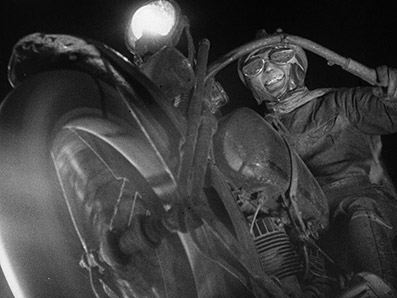
This furiously busy prologue is an astonishing model of filmic economic and invention. The first five of the above-listed events are all covered in carefully organised single shots, restrictively framed for the safe-cracking (the criminal's gloved hands are all we see of him), dynamically so for the motorcycle ride that follows (the camera looks upwards from below the front wheel). Animation is employed to simulate radio transmissions, which are then received as on-screen text. The shooting of the Trade Minister, which is filmed from the front seat of the open-top car in which he is travelling, looking back as the assassins drive up beside him and open fire, is an object lesson in how to tell a story with single moving image. Newspaper headlines and signs do the job that would once have fallen to captions, and the frantic nature of the searches and telephone conversations is reflected in an editing pace that would leave most modern day thrillers gasping in the dust. The killing of the messenger is staged with a minimalism that borders on elegance – an urgent exchange of words begins, a hole is punched through a window pane, the chief of police reacts with alarm and the messenger falls to the ground (it's a template that Hitchcock would later adapt for an assassination in the 1934 The Man Who Knew Too Much). The thing is, all of the above detailed action combined takes up a mere 2 minutes and 14 seconds of screen time, and that includes the opening caption. Yes, you read that right.
The pace eases a little for the wittily handled introduction of our lead character, as scruffy vagrant Hans Pockzerwinski receives a summons to attend the local police station. Here he is handcuffed and led into the chief's office, where he promptly assaults a clerk and wrestles him to the ground. A bit of a rough customer, this Pockzerwinski. Well, not exactly. When he gets to his feet he reveals that the clerk was surreptitiously taking pictures with a miniature camera. Given that Pockzerwinski is actually secret agent 326 (Willy Fritsch) and the summons was a ruse to make contact with him without revealing his true identity, it's not a bad thing that he so forcefully intervened. As it happens, it doesn't make all that much difference, as criminal mastermind Haghi already has a file on 326. He even has two of his fingerprints, lifted from a discarded cigarette that was picked up by a man we assumed was a fellow vagrant in even more dire straights than Hans Pockzerwinski appeared to be. 326, meanwhile, is charged with the task of tracking down this criminal mastermind, no easy job given that the security services have no idea who he is or even what he looks like.
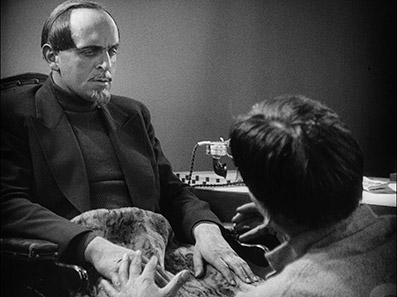
Haghi is in many ways a prototype for Bond super-villains to come. Confined to a wheelchair and attended by a loyal nurse with whom he communicates through sign language, he uses people as pawns in his quest for ultimate power and is technologically some way ahead of those who are looking to catch him. Positioned behind a desk that is peppered with advanced communications equipment (including what looks like a computer capable of receiving instant text messages – remember what year this is) that sits within a large underground lair located beneath the bank of which he is the director, he appears to have a veritable army of operatives at his disposal, a little like Dr. Mabuse before him, another supervillain played by actor Rudolf Klein-Rogge in a Fritz Lang film. He even conforms to the observation made by Jim Jarmush in Blue in the Face about heinous movie villains smoking in an affected manner, though takes this one stage further by only exhaling smoke through one of his nostrils. One of Haghi's top operatives is beautiful Russian spy Sonja Baranikowa (Gerda Maurus), who is given the job of gaining Agent 326's confidence using whatever means she has at her disposal. She makes creative first contact by convincing him to hide her from the cops because she shot a man who tried to force himself on her. But when Haghi orders her to take the assignment a step further she falters; against all her expectations, she has fallen for 326, just as he has for her.
If this sounds like a rather thin premise for a two-and-a-half-hour spy thriller then know that this is just one plot strand in a film that spins a complex and interconnecting web of them. I've not even mentioned Sonja's other assignment, to seduce and bribe the moustache-twiddling Colonel Jellusic (seriously, he's even doing it in his police file photo) into betraying his country and the fact that 326 mistakes him for Sonja's lover. And then there is the secret Japanese treaty that Haghi is keen to get his hands on, to which end he blackmails wealthy society woman Lady Leslane (Lady Leslane) by threatening to show her husband – whom we are left to assume is connected to this treaty signing – photographic evidence of her opium addiction. And all the while 326 and his colleagues are continuing their investigations into the identity and whereabouts of a man who, unbeknown to them, is actually sitting right under their noses.
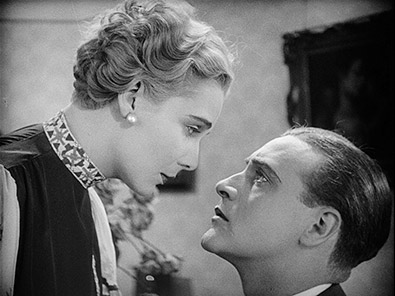
In both cinematic and storytelling terms, the standard set by that opening sequence is maintained throughout, and there are a number of flourishes whose modernity genuinely belies the film's age. After Sonya has been pressured by Haghi into writing a letter to 326, for example, its delivery from her desk into his hand is accomplished in three brief close-ups and the sort of editing you'd screen for budding film students to show them how it should be done. The essentials of modern film grammar are all in place here, from the use of close-ups for clarity and emphasis or to heighten emotional impact, to the use of travelling shots and rapid editing to accelerate pace. This peaks in the film's two consecutive action set-pieces, the first of which sees 326 placed in mortal danger when a locomotive is sent thundering towards his sleeper carriage, the second a car chase that includes city location filming and culminates in a vehicle ploughing through the doorway of a commercial building. Little did Lang know that he was drawing up a template for how future movie chases would so often conclude. The thing is, these sequences are not just technically impressive, they're genuinely exciting – as the locomotive thundered into the tunnel and just-awoken 326 sleepily wondered why his carriage was not moving, I caught myself leaning forward and whispering urgently under my breath, "Get the hell out of there!"
The multiple plotlines are all compellingly developed (the work of Lang's then wife Thea von Harbou, based on her own novel) and busy enough with incident to easily justify that two-and-a-half hour running time (seriously, it just flies). And there are sequences here that, even all these years and countless spy thrillers later, are still smartly devised enough to catch you out. My favourite involves a telegraph office and a customer whose suspicious behaviour at first seems to have no specific purpose, which of course makes the subsequent reveal about what he was up to all the more satisfying.
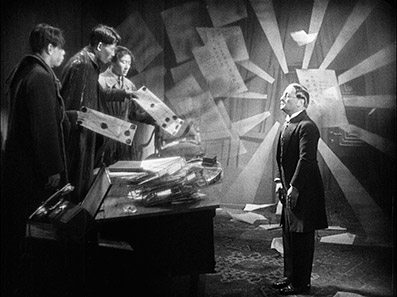
But perhaps the most surprisingly element of the film is the handling of the Japanese delegation. It would not be unusual in a film of this period to find such characters either caricatured or demonised or a combination of the two, but Lang is having none of it. The Japanese here are portrayed as honourable men of conviction and dedication, none more so than their leader, Doctor Masimoto, who is actually played by Romanian born actor and director Lupu Pick. That in itself is not unusual for the time or even the years that followed (Peter Lorre enjoyed considerable popularity in America in the 1930s as Japanese detective Mr. Moto), but so good is the makeup here and so accurate Pick's body language and mannerisms that a Japanese friend to whom I showed extracts of the film was astonished when I revealed the actor's true nationality. The film even includes a sequence depicting sepuku (Japanese ritual suicide) that is absolutely true to the technical detail of this rite. It's an extraordinary sequence to find in a European film of this age, and one that packs the sort of emotional punch that films usually reserve for their lead characters or those close to them.
There's so much more that is worthy of discussion in this remarkable and hugely entertaining film, but I've already passed that point where I should shut up and just encourage you to hunt if out for yourselves. The performances may play at times to silent movie expectations (when someone is anguished, you'll know it from a distance), but nestled within are whole sequences where subtlety and even naturalism are the order of the day (Willy Fritsch's casual amusement after unmasking the enemy agent in his boss's office; just about anything Lupu Pick does as Masimoto). It's a belting example of Fritz Lang the artist and Fritz Lang the entertainer working in sublime harmony, and as riveting and satisfying a spy thriller as you'll see all year.
I can't help but think that younger film fans – those who may have come to silent cinema via the restorations on Masters of Cinema Blu-ray releases – must be bemused by how excited some of us older viewers get when we are brought face to face with the sort of restoration job that F.W. Murnau-Stiftung have delivered here. What you have to appreciate is that we grew up during a time when most films made during the silent era had fallen into a state of sometimes shocking disrepair, and we soon came to accept that this was as good as they were ever likely to look. Thus when digital restoration really began to take off, we were genuinely gobsmacked by what was achieved precisely because of what we had spent our formative years becoming used to as the norm. I've still yet to get used to the jolt to the senses such a transfer delivers, and frankly hope I never do, as the thrill I get when seeing a film from 1928 looking as crisp and attractive as Spione does here is one I'm happy to keep on experiencing. Yes there is a lot of damage still present – the film was reconstructed in 2004 from a total of five difference sources, including a nitrate negative – and the image does not sit quite as solidly in frame as some more recent restorations. The process of compiling material from multiple sources also means that some shots are noticeably weaker in areas of sharpness, grain and visible wear and tear than the shots they sit next to. But in all other respects this is a phenomenal restoration that has exposed a sharpness and level of picture detail that just a few years back I never thought I'd see in a film of this vintage. Nowhere is this more evident than in the big close-up of Sonya's hand when she examines a religious medallion that she gives to 326, where just about every line on her hand and fingers is captured in almost forensic detail. Click on the image below for a full sized screen grab and you'll see what I mean. All such close-ups really shine here, but this crispness and richness is also evident in wider shots, in the detail and texture of clothing, the faces, the facial and head hair, and the busier backgrounds. It helps that the tonal range of the grey scale is also exquisitely judged, delivering a picture that has punch but sacrifices next to nothing to nail those black levels. Gorgeous.
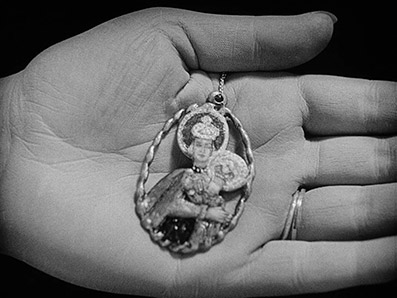
Click on the picture above or here for a full-sized grab
There is, however, one very small but curious glitch that seems to stem from the transfer or restoration. It takes the shape of a small black mark (and we're talking very small here) that intermittently appears at the same spot on the top right corner of the image. It doesn't appear to be on the print itself, as despite being stabilised, there is still some slight movement of the image in the gate, but the mark doesn't move with it, which suggests that it appeared somewhere at the digital stage. Sometimes it's only there for a shot or two, sometimes for a whole sequence, and while many will not notice it, if you do spot it then it can niggle a bit at your peripheral vision. It's not big enough to really act as a distraction, but it is a little odd.
The disc offers the choice of two musical soundtracks, both in Linear PCM 2.0 stereo and both boasting an excellent clarity and dynamic range. Neil Brand's piano track is perhaps the more traditional of the two in that it conforms to our expectations of what a silent film score should probably sound like, but it's a well composed and emotionally driven work that serves the film well. I was initially uncertain about Donald Sosin's score, which while also piano-driven includes a variety of other (sometimes electronically generated) instruments, and feels altogether more modern in places – the title music could easily sit over the credits of any number of spy themed films from the 1960s, and there is a fondness for creating sound effects from instruments and going oriental on the scenes with the Japanese. But I soon warmed to this track, which seemed perfectly married to a film that was itself technically forward-thinking. I also found myself humming the recurring main theme long after the film had finished.
There's only one on the disc, but it's so good that you'll not be left with any cause for complaint. The documentary, A Small Film, But with a Lot of Action (71:41), was produced by F.W. Murnau-Stiftung in collaboration with Transit Film and Film Museum Potsdam, and explores the making of the film in the sort of substantial detail for which Murnau-Stiftung have become rightly celebrated, at least by writers for this particular organ. In includes information on Lang's film career leading up to Spione, and interviews with Thomas Fritsch (son of leading man Willy Fritsch) and Philine Maurus (daughter of actress Gerda Maurus), both of whom act as couriers for their respective parent's memories of working on the film. Alternative takes of the same shots are compared side by side, and the differences between the versions released in Germany and elsewhere in the world are clearly explained. The documentary also explores aspects of Lang's cinematic technique and some recurring motifs that might just have passed you by, and even provides details of true-life events that (very probably) were the inspiration for specific scenes. A terrific companion to the film.
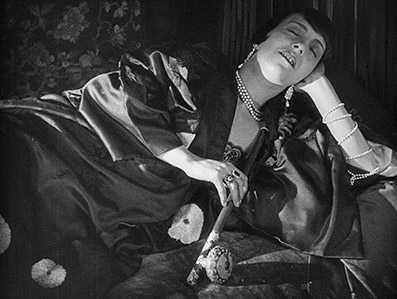
The accompanying Booklet is of the usual high Masters of Cinema standard, and features a detailed essay on the film by Jonathan Rosenbaum, and an equally studious piece by Murielle Joudet, plus credits for the film, notes on viewing, some quality stills and reproductions of two of the original posters.
It's somewhat ironic, and perhaps a little sad, that the most entertaining and thrillingly cinematic spy film I've seen in recent years was made in back in pre-WW2 Germany. Then again, Fritz Lang firing on all cylinders is something to be reckoned with, and Spione is certainly that. It looks terrific on this Masters of Cinema Blu-ray, and the sole on-disc extra is of a similar standard. Highly recommended.
|